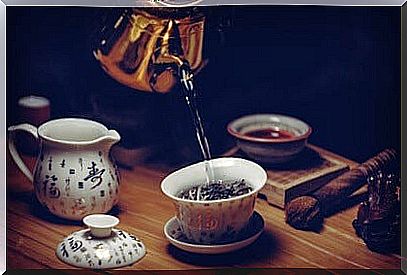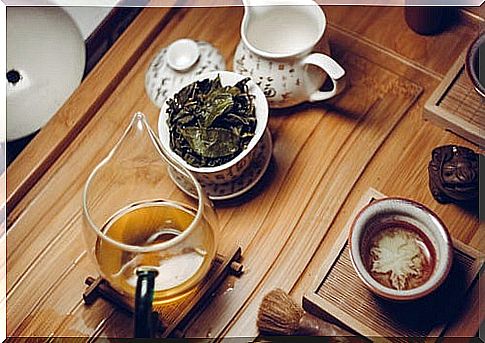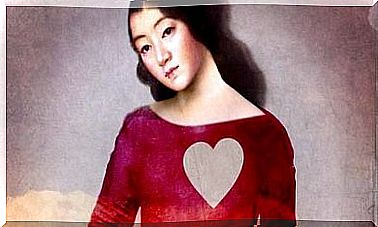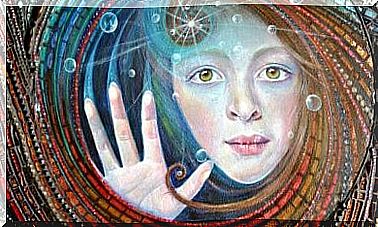The Way Of Tea: A Practice Full Of Harmony And Connection

The way of tea or chadō refers to a whole philosophy inscribed in a ceremonial that goes far beyond boiling water, adding tea and serving it. Within Japanese culture, this practice is studied even in universities. The reason for this is because through this ritual values such as humility, human connection, honesty and refinement are transmitted.
Japanese culture always gives off an aura of appeal to the Western world. We are attracted by its mysticism, its customs and those rituals that magnetize a society based almost always on respect and a sense of cooperation and improvement. Thus, one of the oldest and most fascinating customs is the one built around the tea ceremony.
We know, for example, that since tea was introduced to Japan in the 9th century by Buddhist monks, its consumption was associated with a series of ritual practices that both hosts and guests had to follow. Among them were self-knowledge, spiritual connection to a number of principles of Zen philosophy.
In the 13th century the samurai also made use of this ceremonial in their practices. Now, it wasn’t until the 16th century that Sen no Rikyu, the most well-known historical figure in spreading tea ceremonials, introduced a new concept, the e ichi-go ichi-e. It was about transmitting the importance of enjoying each moment as a precious asset, as a delicate and perfect treasure that will never be repeated.
So let’s see what lessons the philosophy of the tea path leaves us with.

The four components of the tea path
The way of tea is above all a transformative practice. What does this mean? In the works that the historian and philosopher Okakura Kakuzō left us, such as The Ideals of the East, The Awakening of Japan or The Book of Tea , he explains something as interesting as it is relevant. In the first place, this custom is intended to improve the life of the person who carries it out.
Something like this is achieved through values such as discipline, honesty, and refinement. For the Japanese, taking care of good manners is synonymous with respect. It is in this way, in turn, that exquisite connection to the other is achieved, always expressed through humility. All of this is also integrated into the tea ceremony.
Likewise, the chadō or tea path emphasizes four basic components. It is a series of dimensions that start from the Zen philosophy and that must be taken into account to carry out this practice properly. They are as follows:
Wa (harmony)
Having tea with someone according to Japanese culture is also representing nature’s own balance. The harmony that exists in our forests, in our rivers, mountains and oceans, should also be represented in that meeting around a few cups and a hot drink.
For this, there must always be a positive and respectful interaction between the host and his guests. That careful connection, full of affection, peace and kindness, in turn emphasizes the same harmony that we find in the natural world. In this way, everything is connected, everything ends up being the same thing.

Sei (purity)
The sei within the tea path refers to the need to treat oneself and others with a pure heart. Openness of character, honesty and transparency are virtues that the host must take care of. Likewise, the concept of purity implies in turn being able to cleanse the home and one’s own being, of negativities, resentments and bad energies.
Kei (respect)
When a group of people come together for tea, there are no hierarchies, status, or differences. Something that must be sought in the ritual of the tea path is to promote that respect where everything flows. No one should impose their opinion on others or fall into the excess that derives from pride. Respect must be absolute, almost millimeter. At the end of the day, it is in this way, as they also fulfill the previous principles: those of harmony and purity.

Jaku (quiet)
Finally, when the good host manages to master both Kei , Sei and Wa, he reaches this fourth essential level, which is Jaku or tranquility. It is that point where you can transcend beyond the ceremony itself. Only then is it understood that what is applied in the way of tea also serves us for life itself.
Having a respectful and upright attitude, taking care of the well-being of others without falling into arrogance and practicing purity of heart, makes it easier for the Japanese to take care of their cultural values. Since ancient times, it has always been tried that Zen philosophy also supports the behavior of society. Hence, the tea ceremony tries to take care of these pillars through the small universe of this practice.
The ritual built around this ceremony is as extensive as it is fascinating. Its formalism, its utensils, its furnishings and even the building where they are held ( Sukiya ) follow that traditional line that survives indelibly today. Something that to the western gaze continues to fill us with curiosity.









